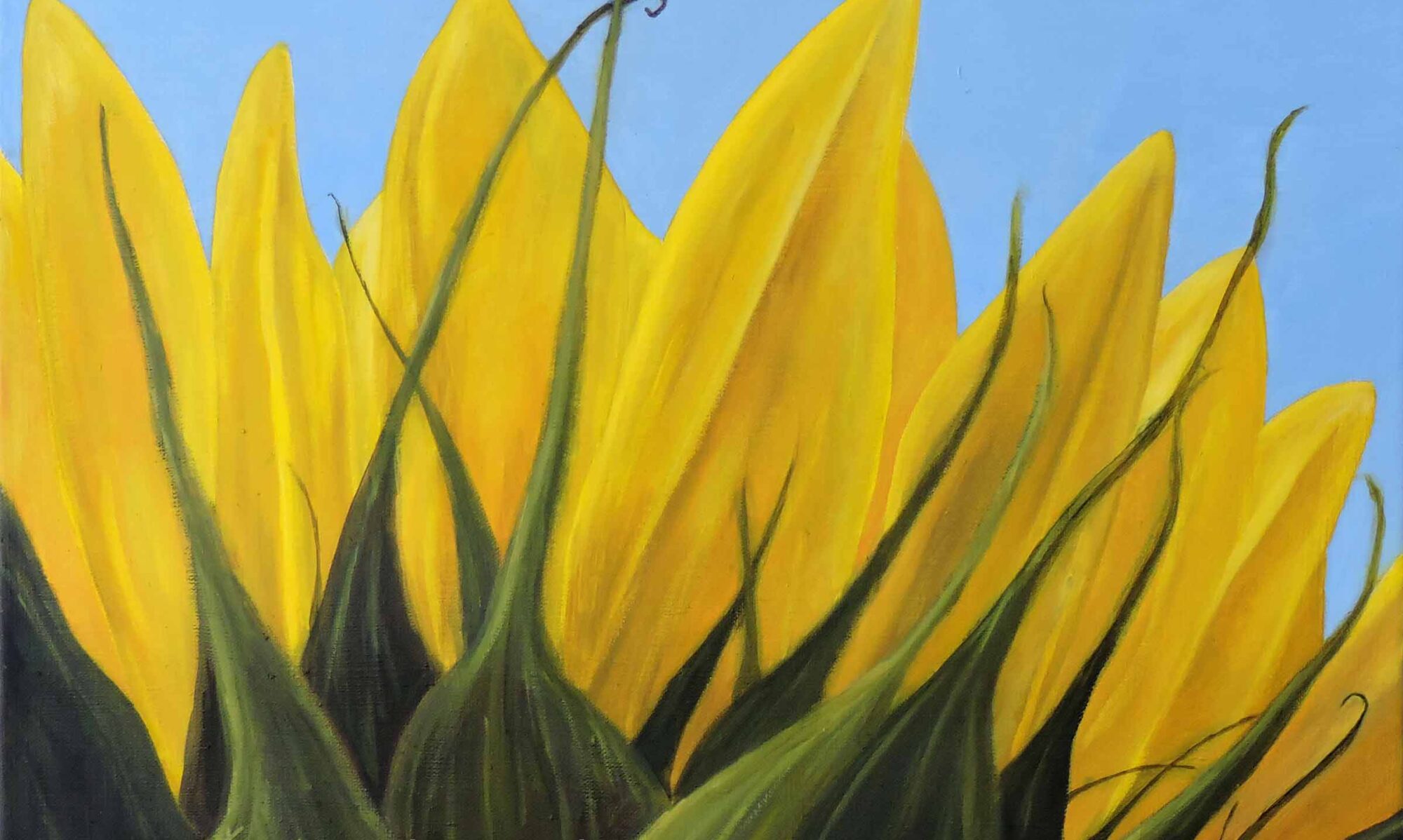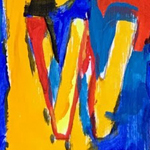
WALL ART | WYSIWYG
Quick links to more art terms and definitions are located at the end of the list.
Wall Art
Any artistic work specifically designed to be displayed on walls. This can include:
-
- Paintings: Traditional artworks on canvas or other materials.
- Murals: Large-scale paintings or artworks directly on walls.
- Posters: Printed images or graphics.
- Decals: Decorative stickers or adhesive designs.
- Sculptural Pieces: 3D art that is mounted on walls.
It’s about transforming a wall into a canvas to enhance the aesthetic of a space, adding character, color, and creativity to a room.
War Artist
Artistic individuals who document first-hand experiences of war through illustrative or depictive records, often commissioned by governments, publications, or driven by personal motivation. They explore the visual and sensory dimensions of war, often absent in written histories. Their artwork reflects the experiences of those who endured it, collecting and distilling their experiences, and influencing how subsequent generations view military conflicts.
Warm Color
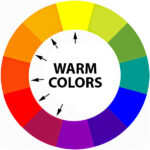
Colors whose relative visual temperature makes them seem warm. Warm colors include red-violet, red, red-orange, orange, yellow-orange, and yellow.
The characteristics of warm colors include:
-
- are made with red, orange, or yellow, and combinations of them.
- tend to feel warm, reminding us of heat and sunshine.
- tend to advance into the foreground, i.e., come toward the viewer.
- may feel more energetic, attention-grabbing, and aggressive.
Wash (in art)
A visual arts technique that results in a semi-transparent layer of color. A wash results from diluted ink or watercolor paint. It’s often combined with drawing and is called “pen and wash,” “wash drawing,” or “ink and wash.” Artists use a wet brush loaded with solvent (water or turpentine) and a small amount of paint or ink. The brush glides over wet or dry paper or canvas, creating a smooth, uniform area. Washes add depth, tonal variation, and subtlety. They are used in landscapes, portraits, and abstract compositions.
Water-soluble Oil Paint
(Also called water-mixable, water-miscible, or Solvent-free Oils.)
A type of oil paint that can be thinned and cleaned up with water. Unlike traditional oil paints, which require solvents like turpentine, water-soluble oils retain the rich texture and vibrant colors of oils while being more accessible and less toxic. They’re great for artists with allergies, beginners, or those working in home studios. Plus, they dry faster than traditional oils, making them a versatile choice for painters.
Watercolor
A transparent or opaque water-based painting compound suspended in a natural gum arabic binder. Watercolor is a moist paint that comes in a tube, thinned using water, and mixed on a dish or palette. Use them on paper and other absorbent surfaces that have been primed to accept water-based paint. Use soap and water for easy cleanup. Also refers to a painting produced with watercolors.
Watermark (in paper)
A distinctive design, identifying image, or pattern that appears as varying shades of lightness or darkness when viewed against transmitted light (or reflected light on a dark background). It results from thickness or density variations in the paper during manufacturing. They can include a paper mill’s trademark or brand name, subtly embedded in the sheet.
Waterscape
Any drawing or painting that depicts water bodies or water, whether tranquil or dynamic. It captures the beauty and essence of rivers, seas, lakes, or other aquatic landscapes. A waterscape can take various forms:
-
- Seascapes: These focus on the ocean or major bodies of saltwater. Seascapes often depict the interplay of water, sky, and distant horizons.
- Lakescapes: These center around freshwater lakes, capturing reflections, shorelines, and the surrounding landscape.
- Riverscapes: These celebrate rivers—their flow, banks, bridges, and the life they sustain.
- Ponds and Streams: Smaller bodies of water, such as ponds and babbling streams, also inspire waterscape art.
Wedging
The process of preparing clay for use on the potter’s wheel or other hand-building techniques by kneading and manipulating it to remove air pockets and smooth out the clays texture. Wedging makes the clay more resistant to shrinking and cracking as it cures.
Wet-on-wet
A painting technique that is well-known as being the primary method of painting used by Bob Ross. Since lighter colors will usually mix with darker colors if laid over the top of them while wet, the technique relies on painting from light colors up. This method gives the painting a soft look and allows the colors to be blended to the painter’s desire.
White
The lightest color, achromatic (having no hue), and the opposite of black. It’s the color of snow, chalk, and milk. White objects fully reflect and scatter all visible wavelengths of light.
White Space
(Also known as Negative Space.)
Refers to the empty areas around and between the elements of a composition. It’s a crucial design principle that helps create balance, organization, and readability in visual art and design. By providing breathing room for the elements, white space ensures that each part of the artwork stands out and is easy to understand.
White Spirits
Solvents used to thin oil paints, achieving the desired consistency and flow. See also “mineral spirits.”
Whiting (in art)
(Also known as chalk or calcium carbonate.)
A fine, white powder derived from natural sources, primarily limestone or chalk deposits. Its chemical composition is calcium carbonate (CaCO₃). When ground into a fine powder, it becomes an essential white pigment. Whiting is highly opaque, covering underlying layers effectively. It’s especially useful for achieving bright whites. Whiting is also a key component in traditional gesso.
Wildlife Art
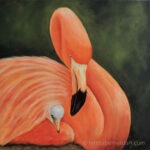
Artwork that depicts the natural world and the animals that live in it, whether wild or domesticated. This genre is one of the earliest forms of art, dating back to prehistoric cave paintings. Portraits of animals, insects, or fish (whether wildlife or family pets) would fit into this genre. For more on wildlife art, click here. See also Everyone Loves Wildlife Art.
Wildlife Artist
A skilled artist who creates artwork depicting animals and wildlife in their natural habitats. They aim to capture the essence of wild animals and their interactions with the landscape. Many wildlife painters focus on a specific type of animal or wilderness. They use mediums like oil paints, watercolors, and pastels to create realistic and detailed images of animals, and some specialize in sculptures of animals.
WIP
An acronym for “Work in Progress.” An unfinished piece of artwork that an artist is actively working on. It represents a stage in the creative process where the artwork is not yet complete but is being developed and refined. WIP allows artists to receive feedback, make adjustments, and share their progress with others. It highlights the evolving nature of artistic creation. See blog article A Painting in The Making.
Woodblock Printing
An ancient technique for printing text, images, or patterns. It involves carving a design into a wooden block, inking the raised surface, and then pressing it onto paper or fabric. Originating in China, this method became prominent in East Asia and spread to Europe. It’s famous for producing intricate artworks like Japanese Ukiyo-e prints and religious texts. Imagine the craftsmanship required for each detail!
Woodcut
A relief printing technique in printmaking that dates back to 8th-century China. It involves printing an image from the surface of a block of wood. An image is etched into the wood using tools like chisels, gouges, and knives. The raised areas of the image are then inked and printed; while cut away or recessed areas do not receive ink and appear blank on the printed paper.
Word Art
Any art that includes words or phrases as its primary artistic component appearing in various media, including painting and sculpture, lithography and screen-printing, and applied art (T-shirts, mugs, etc.).
Worm’s-eye View
A term that describes the perspective of a scene as if viewed from below, as a worm might see it. It’s the opposite of a bird’s-eye view. This perspective can cause objects to seem towering and dominant, thereby making the observer feel small or powerless.
Wrinkle Painting
A technique used to create textured surfaces that resemble wrinkles. This is typically achieved by applying paint or another medium and then manipulating it while it’s wet to form irregular patterns and folds. Once dried, the result is a uniquely textured finish that adds depth and dimension to the artwork. It’s often used for abstract and modern pieces, giving them a distinct, tactile quality.
WYSIWYG
(Pronounced “wizzy-wig.”)
An acronym for “What You See Is What You Get.” It refers to a computing system in which the content shown during editing closely resembles the final output, often a printed document. For example, in word-processing or desktop-publishing software, the on-screen display reflects how the printed document will look, eliminating the need for users to master complex formatting codes.
You May Also Like
This art definitions wordlist is provided as a valuable resource for art enthusiasts. If you like the information here and find it helpful, please consider purchasing a painting. Your support helps to cover the cost of keeping this art word index online. Simply click or tap the thumbnail link of any Teresa Bernard oil painting to view additional details.
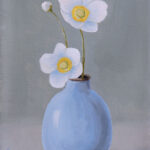
6″ w x 8″ h
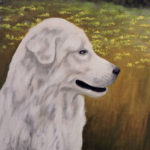
16″ w x 20″ h
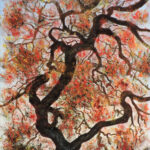
9″ w x 12″ h
Art Glossary Quick Links
Contributing to The Art Dictionary
The art definitions wordlist is a work in progress. New terms and definitions are added on a regular basis. If you know of an art term and definition that isn’t already listed in it, but you believe it should be, send it to us and we’ll consider adding it. We’ll let you know if we do. Thanks!
Thanks for reading this!
